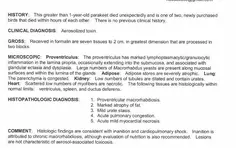UVC lights are not likely safe...as far as I know, most produce ozone (but there are different types and wave-lengths and it's all fairly complex)... Ozone, ionizers and air "sanitizers" are not good for birds. They also change the charge on dust particles and cause them to fall to the ground, but when they are kicked up during cleaning (w/new ions attached), they are more harmful to breath in (post- transformation). That is why I am always telling people to not get air purifiers with ozone, ion or sanitize settings unless they can be turned off.
"Another potential danger is the UV production of ozone, which can be harmful to one's health. The US Environmental Protection Agency designated 0.05 parts per million (ppm) of ozone to be a safe level. Lamps designed to release UVC and higher frequencies are doped so that any UV light below 254 nm wavelengths will not be released, to minimize ozone production. A full-spectrum lamp will release all UV wavelengths and produce ozone when UV-C hits oxygen (O2) molecules.
UVC radiation is able to break down chemical bonds. This leads to rapid aging of plastics, insulation, gaskets, and other materials. Note that plastics sold to be "UV-resistant" are tested only for UVB since UVC doesn't normally reach the surface of the Earth. When UV is used near plastic, rubber, or insulation, care should be taken to shield these items; metal tape or aluminum foil will suffice."
^^ Lots of ozone producing devices are banned in California...due to their respiratory impacts on humans, let alone birds.
If this was PBFD, you are going to need to fog and do a bunch of stuff to kill it- The circovirus is one of the most difficult to kill and can remain actuve for very long periods of time (in carpet, furniture etc). It cannot harm people, but can be spread on them if it is on their skin or in their clothes/hair ect... and it can spread through the air via dander particles in furniture, air ducts etc etc.
Vinegar is not going to come close to killing a disease.
You are going to need to use a stronger chemical and provide plenty of time to air out etc...F10 SC kills a lot of things if used at it's higher concentrations and on non-porous surfaces...but not all, which is why it's important to know whether this was viral or bacterial, and if it was viral...what virus does she think it was?
Did the vet specificity what disease this is? There is a huge difference between how you would want to clean after PDD VS. PBFD. PBFD is extremely hard to kill and lasts for a lot longer on surfaces. Vircon-S is kills it, and nothing else has proven as effective...I would NOT use this with birds in the house (fyi).
F10 also is reportedly effective-- they sell a fogger that you would want to use in your home BEFORE getting other birds. From my experience, it is fairly safe on fabrics etc--- I have used it in the laundry and spilled it enough times to say that it seems not to impact color.
I would NOT exchange the cage-- I would demand your money back, but exchanging it could infect more birds-- they need to get rid of it.

